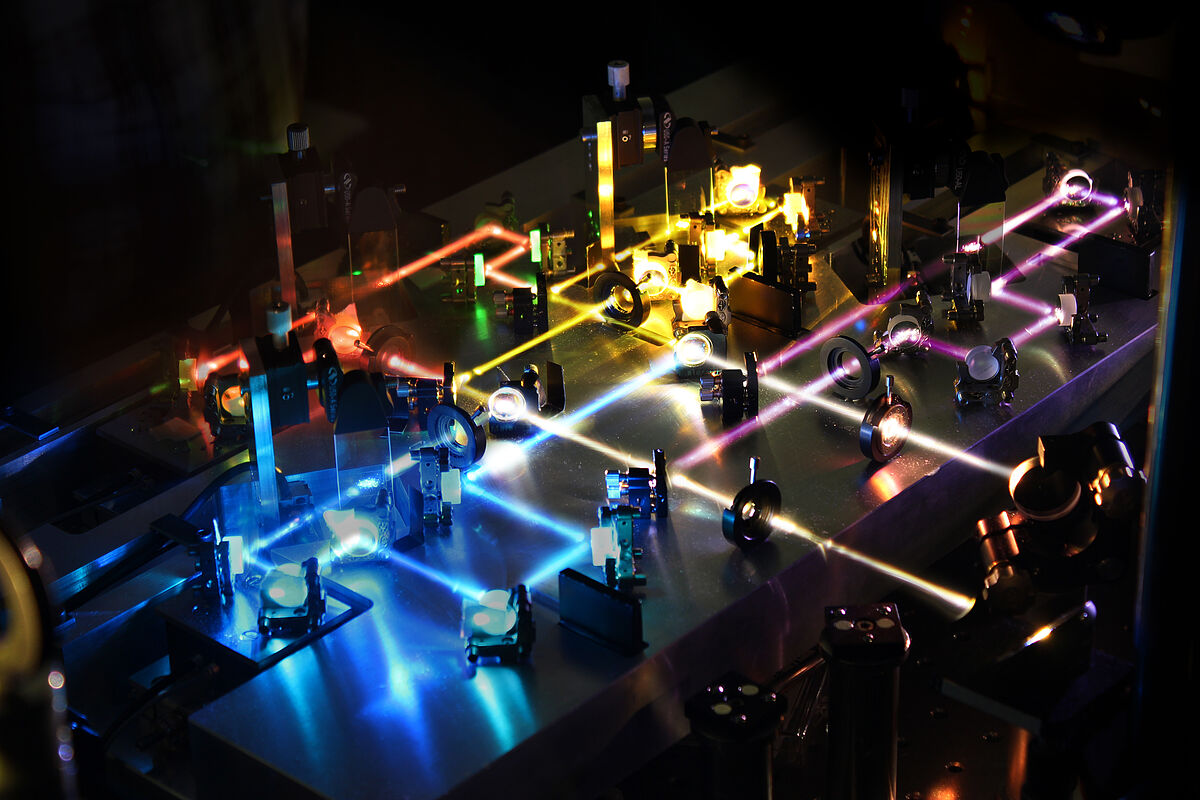Taming light waves
Control of light underlies the capability of probing and manipulating matter on ultrafast time scales. Over the last decade the group has focused efforts on “re-conquering” the attosecond frontier utilizing optical frequencies, in other words, to control and to temporally confine light fields to time intervals shorter than the oscillating period of an optical-cycle (~ 2 fs). The motivation behind these efforts stems from the fact that valence electrons are highly polarizable at optical and nearby ranges. Therefore, it is important that the highest temporal resolution in probing matter must be realized in this part of the electromagnetic spectrum in order to control chemistry relevant electron dynamics.
From a spectral perspective, the ability to control light with a sub-cycle precision implies the capability of manipulating coherent light spectra spanning at least one optical octave of bandwidth around a central optical frequency. This implies a spectrum extending from the deep ultraviolet to the near infrared. Efforts of the group towards this end have materialized with the development of an apparatus which is now known as the light field synthesizer. The apparatus divides a multi-octave supercontinuum spectrum, typically generated in a gas-filled hollow core fiber into a number of spectral bands—three bands in the prototypical system, and four bands in the current implementation. With this technology the group has achieved two major breakthroughs in optical technology. The first was attained in 2011 with the demonstration of field-synthesized transients of light that were confinable and controllable over time intervals shorter than their field oscillation. The second and more important milestone was achieved more recently. In this second step the synthesis of light is extended to the sub-fs domain and it is highlighted by the generation of the first optical attosecond pulse. An optical attosecond pulse is an optical light waveform where more than 50% of its energy is confined within a half-cycle of its field i.e. ~ 380 attoseconds. These pulses comprise the shortest optical fields ever generated or used in ultrafast spectroscopy of matter.
Relevant publications:
Optical attosecond Pulses: Probing the response of bound electrons
M. Th Hassan, T.T. Luu, A. Moulet, O. Raskazovskaya, M. Garg, N. Karpowicz, P. Zhokhov, A. Zheltikov, V.Pervak, F. Krausz and E. Goulielmakis
Nature 530, 66 (2016) (Highly Cited WOS)
Press Release: Sluggish electrons caught in action
News and Views: Ultrashort light pulses shake atoms
Media Coverage: https://www.nature.com/nature/journal/v530/n7588/nature16528/metrics/news
Sluggish Electrons: https://www.youtube.com/watch?v=atPhPHb_Du4Making optical waves, tracing electrons in real-time: the onset of the attosecond realm
E. Goulielmakis and Ferenc Krausz
PIER 147, 127 (2014) (Invited Review)Coherent kiloelectronvolt x-rays generated by subcycle optical drivers: a feasibility study
A.Moulet, V. Tosa, E. Goulielmakis
Optics Letters 39, 6189 (2014)Attosecond pulse generation with an optimization loop in a light-field-synthesizer
B. Bodi, I. Balogh, V. Tosa, E. Goulielmakis, K. Varju and P. Dombi
Optics Express 24. 21957 (2016)Synthesized light transients
A. Wirth, M. Hassan, I. Grguras, J. Gagnon, A. Moulet, T. Luu, R. Santra, Z. Alahmed, A. M. Azzeer, V.Yakovlev, V. Pervak, F. Krausz, and E. Goulielmakis
Science 334, 195 (2011)

